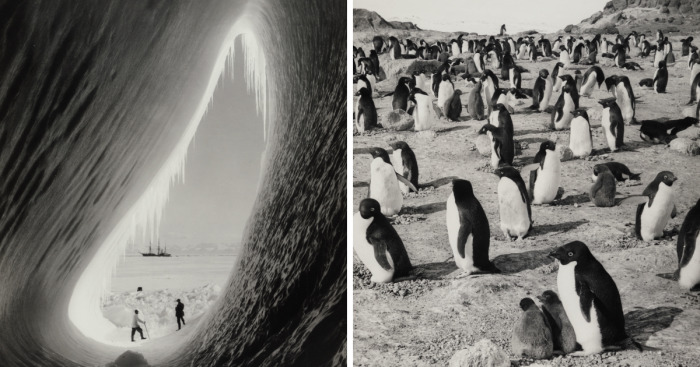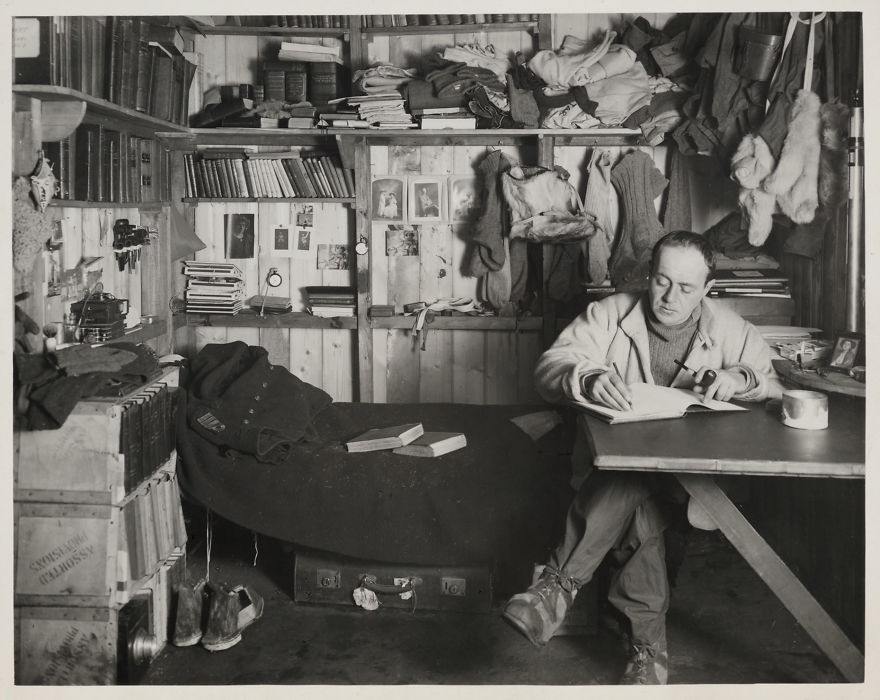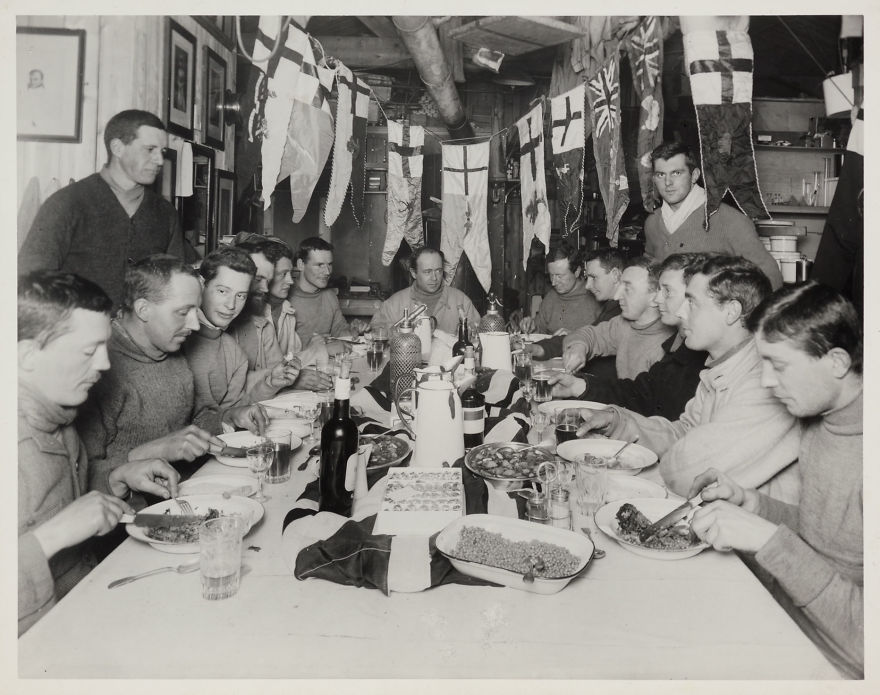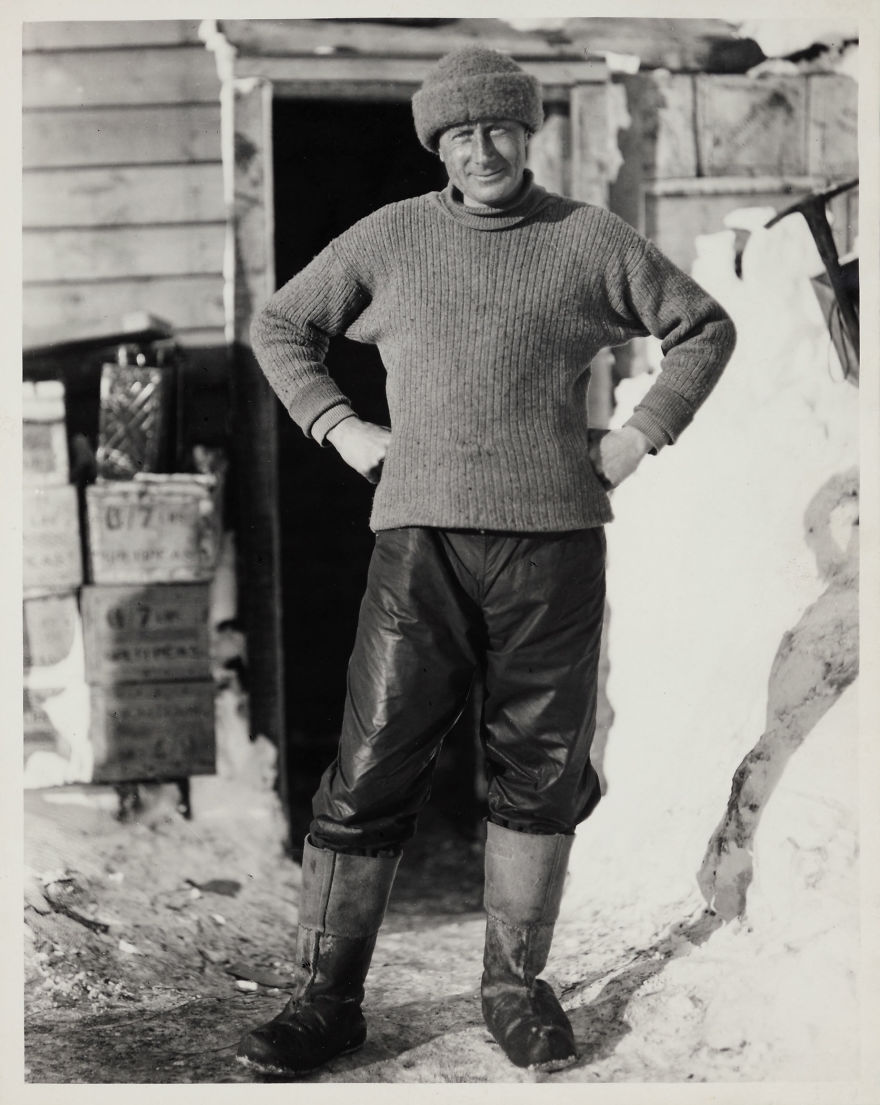
11Kviews
Fatal 1912 Scott’s Expedition To The South Pole Documented By Henry Robertson Bowers
What does disappointment look like? What is the expression on a man's face, expecting death in the icy wilderness?
"The worst has happened", Robert F. Scott wrote in his diary on January 17, 1912. The same day, Scott and four of his men had reached the South Pole after two and a half month's march through the ice fields. From a distance, they had spotted what looked like a cairn. Scott initially thought they had been mistaken, but half an hour later, they discovered a huge flag that fluttered in the wind.
Upon reaching the Pole, they found traces from lots of dogs, skis, and sleds. "The Norwegians have forestalled us and are first at the Pole. It is a terrible disappointment", Scott writes on.
Two of the members of the expedition died during the march back. The other three - among them Scott himself - camped for the last time on March 19. The remains of which were found eight months later.
Herbert Ponting (1870 - 1935) was a photographer at Terra the Nova expedition, but because of his age (he was no less than 42 years old!), he wasn't expected to be joining the arduous expedition to the Pole. Henry Robertson Bowers was the photographer behind the images of the disappointed men at the South Pole. He sits on the left of the group photo. Two months later, he was dead, along with his leader Scott.
The Terra Nova Expedition, officially the British Antarctic Expedition, was an expedition to Antarctica which took place between 1910 and 1913. It was led by Robert Falcon Scott and had various scientific and geographical objectives.
More info: preusmuseum.no
This post may include affiliate links.
A Grotto In An Iceberg
Herbert Ponting (1870 – 1935) was the expedition's official photographer.
This is a beautiful shot, showing the "Terra Nova" from inside a grotto that was formed by an iceberg as it turned over, carrying a large floe which froze onto it.
Both Ponting and Scott were struck by the colours of the ice inside this ice grotto; they were a rich mix of blues, purples and greens.
Ponting thought that this photograph, framing the Terra Nova, was one of his best.
Preus Museum's collection
Adélie Penguins At Cape Royds
Always adorable!
Photo: Herbert Ponting, Preus Museum's collection
Interesting fact... These are the smallest of the Antarctic penguins. One identifiable mark is their all black head and the white ring around their eye.
Amundsen's Tent At The South Pole
What a disappointment when the party found out that the Norwegian team led by Roald Amundsen had preceded them by 34 days. Not a good day for a party.
In addition to the tent, the Norwegian flag and other traces, they found a letter to King Haakon VII of Norway (which Amundsen politely asked Scott to deliver) and a note stating that Amundsen had arrived there with four companions on 16 December 1911.
Photo: Henry R. Bowers, Preus Museum's collection
Dog Team Resting By An Iceberg
Photo: Herbert Ponting, Preus Museum's collection
The Tenements
Photo: Herbert Ponting, Preus Museum's collection
The Five At The South Pole
Scott's party at the South Pole, 18 January 1912.
Left to right: (standing) Edward Adrian Wilson (died March 29), Robert Falcon Scott (died March 29), Lawrence Oates (died March 17) (seated) Henry Robertson Bowers (died March 29), Edgar Evans (died March 17)
Photo: Henry R. Bowers, Preus Museum's collection
Aouch. Some of their face are burnt by the cold. They must suffer so much. Or maybe you don't feel anything anymore?
An Iceberg In Midsummer
Look at the little person on the right!
Photo: Herbert Ponting, Preus Museum's collection
The Last Rest
On 12 November 2012, a search party found the tent containing the frozen bodies of Scott, Wilson and Bowers.
After having read the relevant portions of Scott's diaries, the nature of the disaster was revealed. After diaries, personal effects and records had been collected, the tent was collapsed over the bodies and a cairn of snow erected, topped by a cross fashioned from Tryggve Gran's skis.
The party searched further south for Oates's body, but found only his sleeping bag. On 15 November, they raised a cairn near to where they believed he had died.
Photo: Herbert Ponting, Preus Museum's collection
Capt. Scott's Last Birthday Dinner
Scott's 43rd birthday party June 6th 1911 on board the Terra Nova would also be his last.
Photo: Herbert Ponting, Preus Museum's collection
Lieut. Bowers
Henry Robertson Bowers is aged 29 in this portrait taken by Herbert Ponting.
Preus Museum's collection
At The South Pole
From left to right: Dr. Wilson (pulling the string to release the shutter), Captain Scott, P. O. Evans, Captain Oates and Lieut. Bowers.
Behind them the tent in which they were staying, and, on the right, in the background, a small snow cairn with a Union Jack
Preus Museum's collection
The Castle Berg
The persons, the sledge and the dogs emphasize the bigglilty of the iceberg.
Photo: Herbert Ponting, Preus Museum's collection
Petty Officer Evans
Edgar Evans is aged 35 in this portrait taken by Herbert Ponting.
Preus Museum's collection
Dr. Wilson
Eward Adrian Wilson is aged 39 in this portrait taken by Herbert Ponting.
Preus Museum's collection
Capt. Scott
Robert Falcon Scott is aged 43 in this portrait taken by Herbert Ponting.
Preus Museum's collection
Capt. Oates
this man was an unsung hero...realizing he was too weak to go on, and knowing his compatriots would not leave him, thus endangering their own survival, he told the others that he was 'stepping outside and would return shortly' then walked away to his death.
So sad. And this is what is left of them. They paid the ultimate price for us to see these.
read this expedition story many times and i am awed and amazed at the strength and courage of these men.i salute them
So sad. And this is what is left of them. They paid the ultimate price for us to see these.
read this expedition story many times and i am awed and amazed at the strength and courage of these men.i salute them

 Dark Mode
Dark Mode 

 No fees, cancel anytime
No fees, cancel anytime 























































































